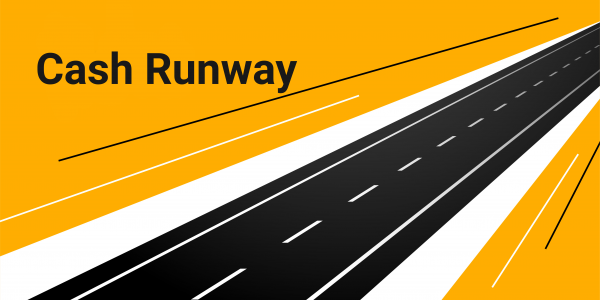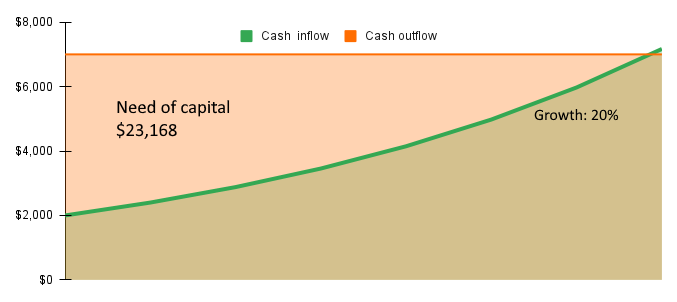Managing startup finances can seem very complicated. Today we will try to approach this issue in the simplest way possible. Without calling an accountant and without complicated analytical tools. All you need is your bank account details, a pen and a piece of paper. Now, that we have the basic tools, we can move on to one of the simplest ways to manage finances and expenses in a startup.

It is considered to be an indicator, but in fact – it is a numerical value, that shows how quickly the company’s account runs out of cash. A simple, eye-opening, solid portion of valuable data, given as a single number.
The value that shows how much money is disappearing from a Startup’s account each month.

If a startup wants to grow – it needs to invest, and just spend its cash. By observing the Burn Rate, you can get a very simple indication of How is the money being spent? We will discuss two cases when a startup increases its spending:

If a startup wants to grow – it needs to invest, and just spend its cash. By observing the Burn Rate, you can get a very simple indication of How is the money being spent? We will discuss two cases when a startup increases its spending.

If a startup wants to grow – it needs to invest, and just spend its cash. By observing the Burn Rate, you can get a very simple indication of How is the money being spent? We will discuss two cases when a startup increases its spending.

Runway shows how long the company can still survive. Usually, we define the Runway as the number of months. To determine the Runway you only need bank balance (which you should always know by heart) and your Burn Rate.
All you need to do is to divide the amount on your bill by your Burn Rate:

The Runway indicator is a very useful tool that can give you a lot of valuable information. For example, to what extent it is worth imposing restrictions on your business and cutting costs. For example, if your Runway is 6 months, and cutting costs will not affect its extension – it is worth considering the validity of such savings.

The Runway indicator is a very useful tool that can give you a lot of valuable information. For example, to what extent it is worth imposing restrictions on your business and cutting costs. For example, if your Runway is 6 months, and cutting costs will not affect its extension – it is worth considering the validity of such savings.

If the Startup already has some traction and you can determine its growth rate, then the Burn Rate provides a gateway to other, more important information. Let’s say:
– your revenue (on a cash basis) is growing at 20%,
– while your monthly spending budget is $7,000.
With this information, you can determine your capital needs at this point. Of course, we are not considering a scenario where more cash will allow you to achieve even better results. We will only focus on the question: „How much funding do I need right now to get my business to profitability?”.

In this example, we can see how Burn Rate reflects financial needs.
On the other hand, if the startup has already raised that amount of money, we have information on how much growth we need to have in the future period. Don’t worry, we will write about the growth rate in startups more than once.
These are expenses that you don’t have to pay now. They are not charged to your bank account and in no way affect your quick Burn Rate calculation. Costs that you already know you will have to incur, but are not visible yet. These are for example
– The last tranches of payment to your software developer.,
– The costs of the annual audit,
– The annual IP protection fees or
– The additional commissions for partners calculated at the end of a longer period.
If you want to accurately calculate your Runway – be sure to take a look at them.
Some SaaS products often have „upfront” purchase options. This is often the case with annual subscriptions, where you get the revenue now and the costs associated with that revenue may come in the future. If a significant part of your customers decides to make such purchases, your Burn Rate will temporarily look very satisfying and may lead to wrong conclusions.
Turnover tax differs in many regions and its calculation varies, depending on tax regulations.
Easy to implement, it can save you up to 80% of the problems with managing finances in a Startup
Doesn’t work for larger organizations that do accrual accounting
At VenturePI we know how hard it can be to get the right financial data from Startup. So we decided to develop a set of simple tools that will help you ask key questions and always get the right answers. Find out and try our:

(PL) Proszę napisz wiadomość jeśli chciałbyś otrzymać ten artykuł w języku Polskim.
(ES) Por favor, escriba un mensaje si desea recibir este artículo en español.
(GER) Bitte schreiben Sie eine Nachricht, wenn Sie diesen Artikel auf Deutsch erhalten möchten.
mu@venturepi.com
Copyright © VenturePI
